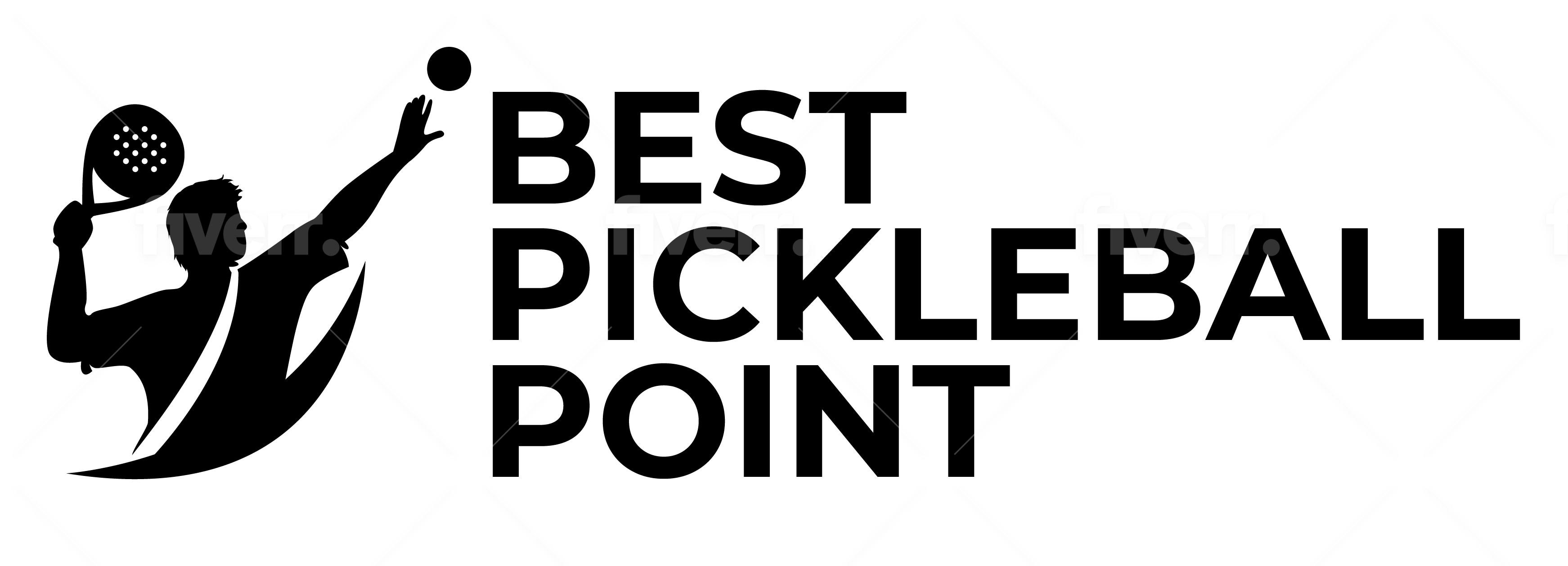Pickleball is a fun and easy game to learn, and it is a great way to get some exercise. Having said that, understanding the basic rules of pickleball is still necessary for every pickleball player. To become successful in this sport, the first rule that should be learned by every beginner is how to serve a pickleball.
One of the most crucial shots in the game of pickleball is the serve. It can be utilized to manage the point and mislead your opponents. To perfect the art of pickleball serving, you need to understand a few things.
For that purpose, in the following article, I will cover the basic principle of pickleball serve and what rules should be followed to have a good pickleball serve in your repertoire. By the end of this article, you will know everything you need to about how to serve in pickleball for beginners. So are you ready? Let’s get started!
Rules of Pickleball
The basic rules of pickleball are as follows:
- The ball must be hit with an underhand stroke.
- Before the opposing player strikes the ball, it must first bounce.
- When the ball lands on the court’s other side, the opponent gets the point.
- The game is played to 11 points.
What are the 5 Serving Rules in Pickleball?
In pickleball, the service is the most important weapon for any player. Every single game of this sport whether singles or doubles starts with a serve. Therefore, it is crucial to have a strong and accurate serve in your set of skills if you want to be one step ahead of your opponent.
But before learning how to serve in pickleball, some key rules of serving should be kept in mind and must be followed by every pickleball player. Here are some of the basic rules on how to serve a picklefball.
- The service must be made underhand.
- The ball must be hit diagonally into the opponent’s court.
- The position of your feet should be correctly placed.
- The contact that a paddle makes with the ball should be below the waistline.
- As a server, you can only attempt a serve one time.
Underhand Motion
In pickleball, for serving there should always be an underhand or also called backhand motion. To make it more clear, there is no side and above hitting allowed in pickleball. In addition, just like an arc moving upward, the arm of the server should be moved exactly like that at contacting the ball.
Diagonal Landing
One of the similarities between pickleball and tennis is when you are serving the ball should land diagonally into the opponent’s court. This is a strict serving rule that is keenly followed in both sports.
Feet Positioning
While serving in pickleball, one of your feet should remain behind the baseline just like in tennis. Upon hitting the ball, either of the feet should also touch the ground.
Waistline Contact Point
It is compulsory in pickleball service that the contact point between a paddle and a ball should be made below the waistline. What that means is, the contact point gets higher for tall players.
One Serve Allowed
In pickleball, there is no second chance of serving for a player unlike in tennis. You have to make it right on the first attempt. In case of service fault, it is then awarded to your team partner or it goes to your opponent’s side.
Serving Techniques
Now after knowing all the basic rules of serving, it is time to explore some of the most common serving techniques in pickleball. There are many different ways to serve, and the technique you choose will depend on your playing style, your opponent’s weakness, and the situation at hand.
Here are a few of the most popular serving techniques:
Soft Serve
This simple and effective service is ideal for beginners. To execute a soft serve, stand in the right-hand service court, and underhandedly strike the ball, making sure to clear the net and land the ball in the opponent’s service court.
This type of serve is typically hit with a gentle flick of the wrist, and it is designed to start the point with a slow, high-bouncing ball that is easy to return.
Topspin Serve
This service is designed to put a spin on the ball, causing it to bounce lower and faster than a soft serve. To execute a topspin serve, hit the ball with an upward motion, brushing the paddle up the back of the ball to create a topspin.
This service can be challenging the opponents to return the ball because the spin causes the ball to bounce differently than a flat serve.
Slice Serve
This service is similar to the topspin serve, but it is hit with a slicing motion that causes the ball to spin in the opposite direction. A slice serve can be particularly effective against opponents who struggle with backhand returns.
To execute a slice serve, hit the ball with a downward motion, brushing the paddle down the back of the ball to create a backspin.
What is a Legal Pickleball Serve?
In pickleball, there are many potential methods to perform a service, but it is crucial for players to just think about those possibilities that are accepted as acceptable and lawful by the rules.
When it comes to legitimate pickleball serves, there are only two types available.
- Volley serve
- Drop serve
Pickleball Volley Serve
Making contact with the ball in the air without touching the ground or playing surface is known as a traditional pickleball volley serve.
For getting speed and power in your shots, this type of service is recommended by many pickleball players. The reason is that while doing this service, the contact point is below your navel point. So as a result, you will get a solid connection and push in your shots.
Pickleball Drop Serve
As the name indicates, in this form of service, the connection with the ball is made after it hits the ground. By dropping the ball from any height, you can strike the ball as soon as it bounces off the playing surface. Players of all skill levels have adopted this technique for making extra spin in their pickleball serves.
However, the sole negative aspect of this type of service is the low striking point. Even by dropping the ball from a certain height, it cannot bounce more than the mid-thigh level. Thus resulting in shots that will be less powerful.
The primary distinction between these two main forms of service is the contact point. One allows you to hit it in the air while for the other you have to make the ball bounce before hitting it.
Compared to a volley serve, there are fewer restrictions to follow in the drop serve. From any height, you can drop the ball and then strike it in any way possible after bouncing it. Moreover, there is also no limit to bouncing the ball.
You can bounce even two or three times as long as the position of your feet is right. But make sure that the ball should just be dropped rather than thrown upward or downward.
What is Illegal Pickleball Serve?
A pickleball serves that violates the laws of the game is said to be unlawful. This type of service is not allowed and will result in the offending player receiving a penalty. It’s crucial to understand the many unlawful pickleball serving techniques before you begin playing the game.
The most common way to do a pickleball serve illegally is to hit the ball before it has had a chance to bounce. This is regarded as a mistake and will cost you the point.
Another way to illegally serve a pickleball is to serve the ball into the net. This is also considered a fault according to the pickleball rules and will result in the loss of a point.
Going off-sides with the ball is also said to be an illegal pickleball serve. It is a major fault and will result in awarding a point to your opposite player.
Serving Tips and Strategies
Serving is not just about hitting the ball over the net. Additionally, it’s about preparing yourself for a strong position at the point. Here are a few different serving strategies that you should consider if you want to learn how to serve a pickleball correctly. These techniques can increase your chances of winning more points in a pickleball game.
1. Mix up your serves
Do not always rely on the same server. Combine it with a variety of servings to keep your opponent guessing and off-balance.
2. Aim for the corners
When serving, aim for the corners of the service box rather than the middle. As a result, it will be more difficult for your rival to return the ball with power and accuracy.
3. Vary your pace
Do not always hit the ball at the same speed. Vary your pace, mixing in some soft serves and some hard serves to keep your opponent off-guard.
4. Serve to specific areas of the court
Depending on your opponent’s weaknesses; you may want to serve specific areas of the court. For instance, if your adversary has a poor backhand, you could want to concentrate on hitting slice serves to their backhand side.
5. Use the element of surprise
Occasionally, try throwing in a surprise serve, such as a lob serve or a drop shot serve. These unexpected serves can catch your opponent off-guard and give you an advantage in the point.
6. Watch your opponent’s position
Before you serve, take a quick look at where your opponent is standing. If they are positioned deep in the court, you may want to hit a hard serve to keep them back. If they are positioned close to the net, you may want to hit a soft serve to force them to back up.
7. Be confident
Serving can be nerve-wracking but try to approach it with confidence. Believe in your ability to hit a good service, and do not be afraid to take risks and try new techniques.
Conclusion
Serving is an essential part of pickleball. Mastering the art of the service can provide you with a competitive advantage by winning more points and improving your overall game.
In the above article, I have explained that by following the basic serving rules, experimenting with different serving techniques, and using serving strategies you can learn how to serve a pickleball. You will soon become a serving master in the thrilling game of pickleball with practice and perseverance.







